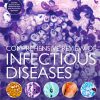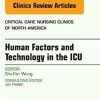From the Exposome to the Socioexposome in COVID-19 Research
jamanetwork.comThe coronavirus disease 2019 (COVID-19) pandemic continues to expose how access to health care and delivery of care are important concerns, second only to the primary concern regarding exposure to the severe acute respiratory syndrome coronavirus 2 (SARS-CoV-2) in the first place, and how this exposure can itself in large part be attributed to socioeconomic disparities.
Originally called the Great Equalizer, it was implied that the virus itself does not discriminate. However, as the pandemic has unfolded, it has become clear that instead, SARS-CoV-2 is a magnifier of existing inequities.
As Bonnie Henry, MD, MPH, the Health Minister of British Columbia, Canada, stated: “This is a storm that’s affecting the world. But we are not in the same boats.” Black, Indigenous, and people of color have been disproportionately affected by the COVID-19 pandemic, laying bare disparities along race and class lines.
In their assessment of sociodemographic factors associated with use of telemedicine for ambulatory care during the COVID-19 pandemic, Eberly et al3 found that older, non–English speaking Asian patients with Medicaid insurance completed fewer telemedicine visits and that older Black and Latina women of lower socioeconomic status made less use of telemedicine with video.
These findings suggest that more efficient provision of health care via higher technological tools does not guarantee more access to health care, nor better health outcomes. Furthermore, the study by Eberly et al3 highlights that more attention must be paid to socioeconomic dimensions shaping avenues of access to care.
Without this attention, efforts to address parity in health care delivery could be rendered futile, akin to filling a leaky pot.

















